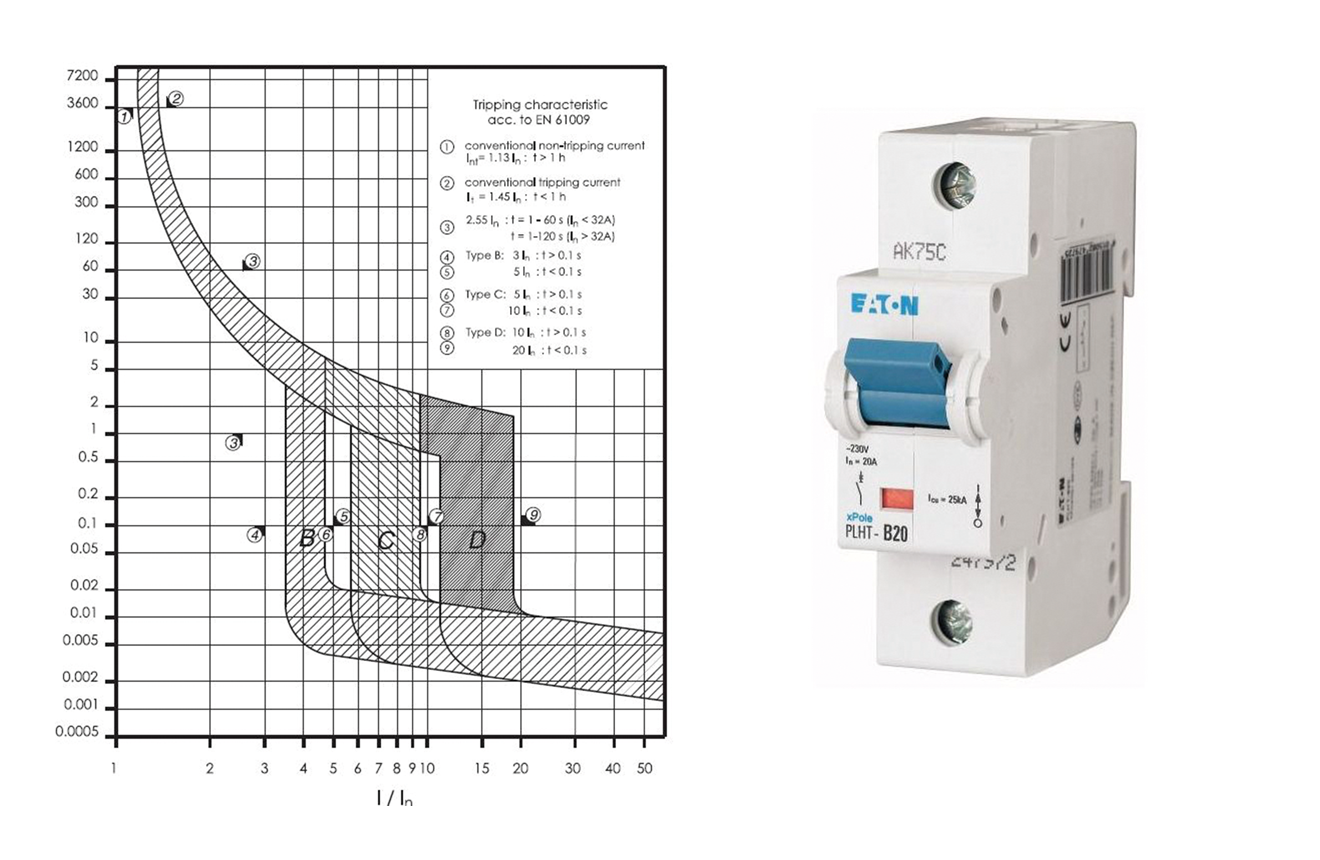OVERCURRENT CHARACTERISTICS
The decision to use Type B, C or D MCBs or RCBOs for final circuit protection in residential, commercial or industrial buildings can be based on a few simple rules.
However, an understanding of the differences between these types of device can help the specifier or installer overcome problems of unwanted tripping, disconnections times for earth fault protection or issues associated with discrimination with upstream protective devices.
The primary purpose of circuit protection devices such as MCBs is to protect the cable downstream of the device. The first requirement, therefore, is to select a device in accordance with the latest revision of the 18th Edition.
BASIC APPLICATIONS
The essential distinction between Type B, C or D devices is based on their ability to handle surge currents without tripping. These are, typically, inrush currents associated with reactive loads such as lighting, or loads containing motors or battery charging equipment. Types B, C & D are recognised within BS 7671 and can be broadly categorised as follows:
- Type B devices are generally suitable for domestic applications. They may also be used in light commercial applications where switching surges are low or non-existent.
- Type C devices are the normal choice for commercial and industrial applications where some degree of electrical inrush is expected.
- Type D devices have more limited applications, normally in industrial use where high inrush currents may be expected.
The classification of Types B, C or D is based on the fault current rating at which instantaneous operation occurs (typically less than 100ms) to protect against short-circuits. It is important that equipment having high inrush currents should not cause the circuit- breaker to trip unnecessarily, and yet the device should trip in the event of a short-circuit current that could damage the circuit cables.
TRIPPING CHARACTERISTICS:
- Type B devices are designed to trip at fault currents of 3-5 times rated current (In). For example a 10A device will trip at 30-50A.
- Type C devices are designed to trip at 5-10 times In (50-100A for a 10A device).
- Type D devices are designed to trip at 10-20 times In (100-200A for a 10A device).
Normal cable ratings relate to continuous service under specified installation conditions. Cables will, of course, carry higher currents for a short time without suffering permanent damage.
As well as protecting cables against the effects of overloads and short circuits, MCBs can also be legitimately used to provide protection against earth faults and protect against the effects of electric shock, on both fixed and portable equipment. However, the earthing arrangement and total earth loop impedance (Zs) value of the circuit will dictate whether an MCB is able to provide a suitable disconnection time.
UNWANTED TRIPPING
As well as natural inrush currents, sometimes failure of lamps/ components can trip Type B circuit- breakers in domestic and retail environments. This is caused by high arcing currents occurring at the time of failure.
A Type C device may be substituted for a Type B device where unwanted tripping persists, especially in commercial applications. Alternatively it may be possible to use a higher rated Type B MCB, say 10A rather than 6A. Whichever solution is adopted, the installation must be in accordance with BS 7671.
TEC Electric, Unit F2 and F3, Weatherwell Business Park, Clondalkin, Dublin, D22 HN36
T: 00353 (0)1 4572445
E: electrical@tec.ie
W: www.tecelectric.ie











